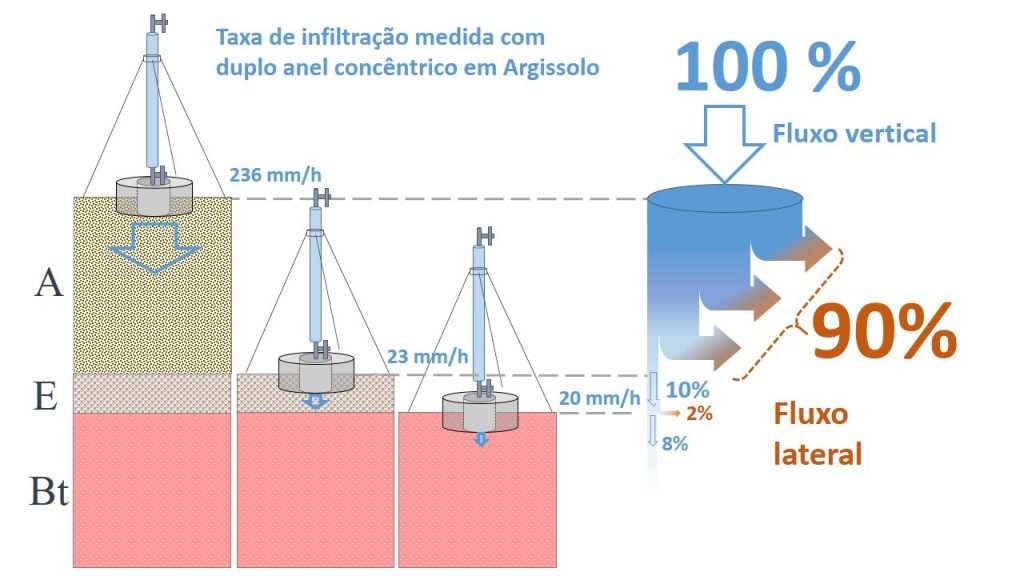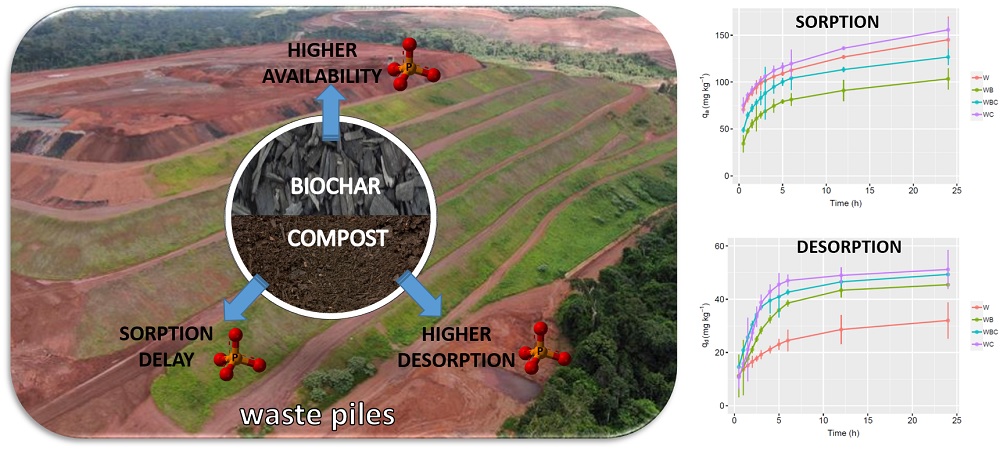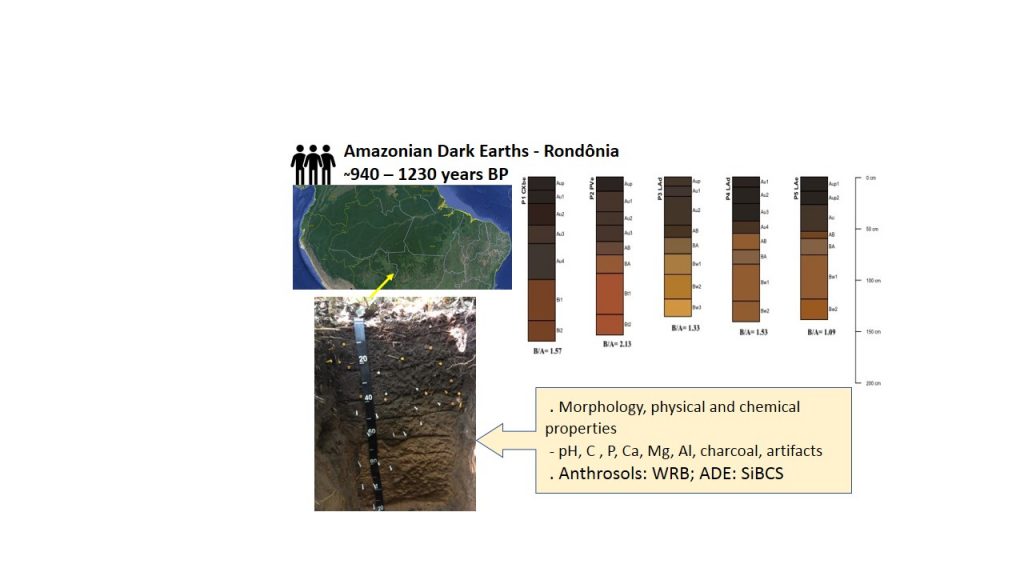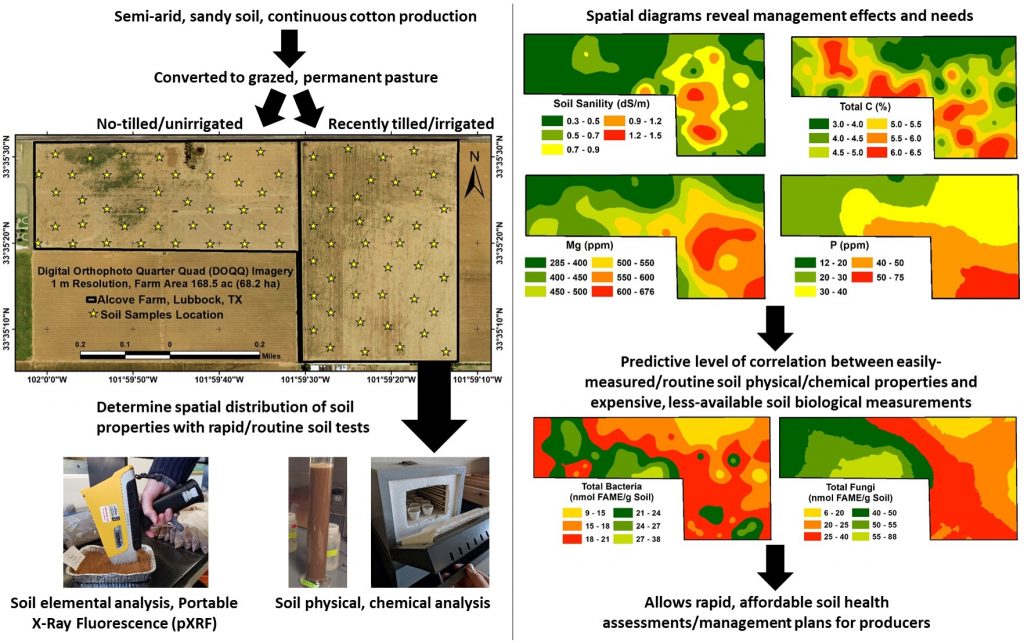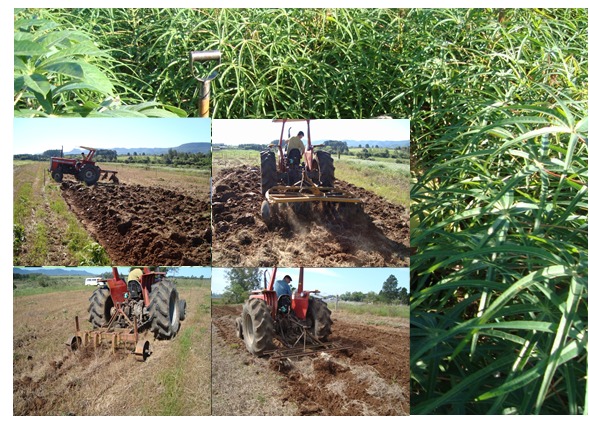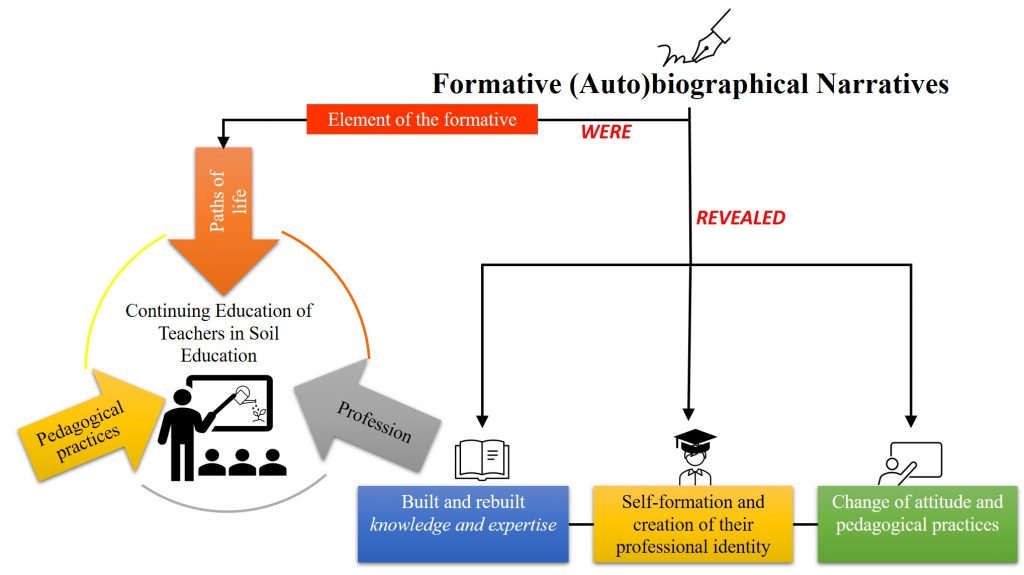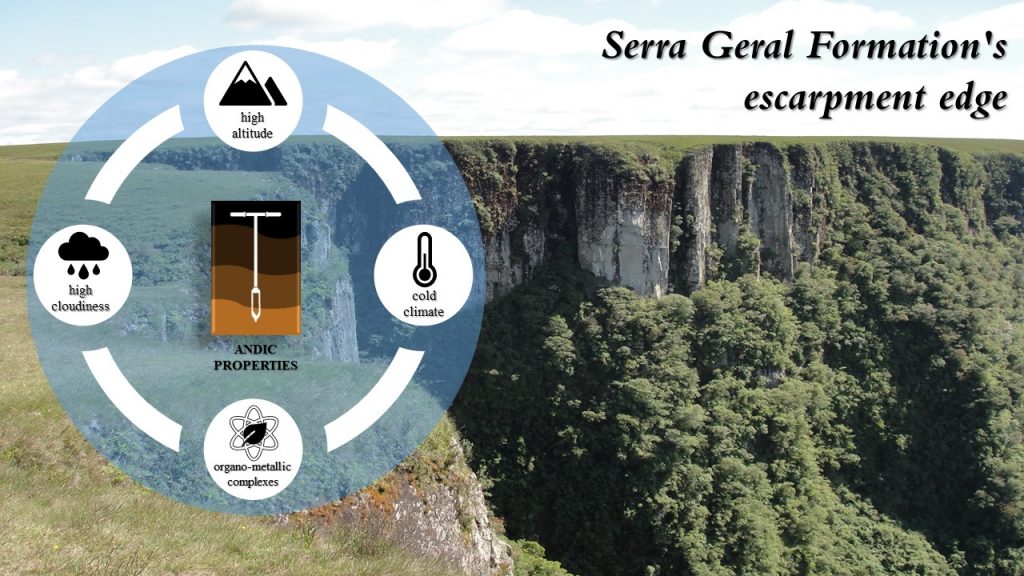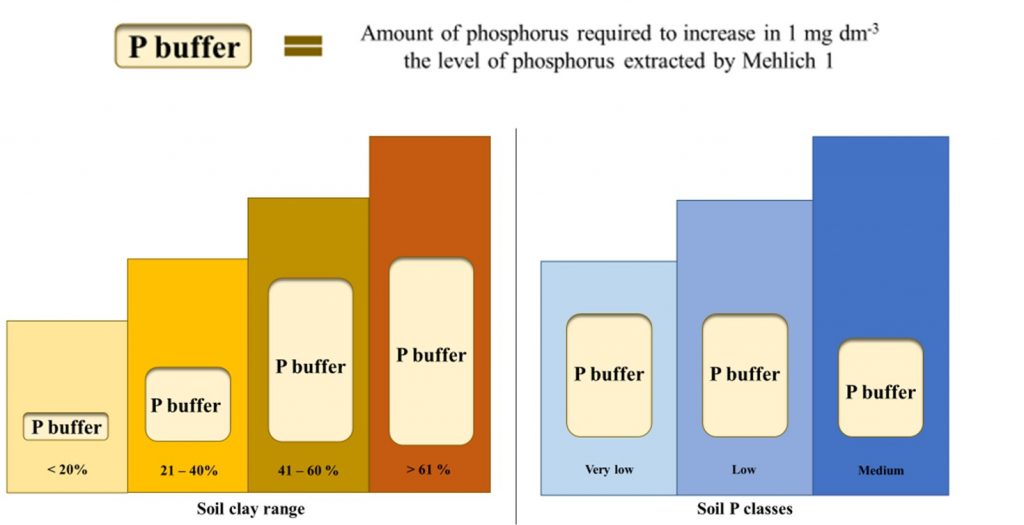Estimating lateral flow in double ring infiltrometer measurements
29/Jul/2021
ABSTRACT The steady infiltration rate of soil profiles is commonly determined for irrigation and soil conservation planning, but the divergence of methods reduces the reliability of measurements. In this study, the steady infiltration rate measured with a double ring infiltrometer (isr-dri) in different layers of a soil profile was compared between layers and with the steady vertical saturated flow rate estimated by the Richards equation (isr-hy). The measurements of isr-dri at the top of the A, E, and Bt horizons […]
Biochar and conventional compost reduce hysteresis and increase phosphorus desorbability in iron mining waste
21/Jul/2021
ABSTRACT: Phosphorus (P) fixation in the soil reduces the utilization of this element by plants and can be one of the main problems for fertilization management in soils containing Fe oxides. As a strategy to minimize the effects of P retention, organic materials, such as biochar or commercial composts, may be useful tools to maintain P availability and delay immobilization of this element in the soil, thereby benefiting, for example, the rehabilitation of areas impacted by Fe mining. The objective […]
Amazonian Dark Earths in Rondônia State: Soil properties, carbon dating and classification
29/Jun/2021
ABSTRACT Throughout the Amazon region, dark-colored soils with increased fertility are identified and referred as Amazonian Dark Earths (ADE). These unique soils are characterized by an anthropic surface horizon with dark colors, presence of charcoal and artifacts, in contrast with surrounding non-ADE soils. The ADEs show extraordinary properties such as the capacity of maintaining the dark colors and high nutrient levels after years of farming, even under the highly favorable climatic conditions for oxidation of organic matter and weathering of […]
Rock size fragments reduction allow including their effect on water retention properties determined with a dew point potentiometer
24/Jun/2021
ABSTRACT The relation between water content and water potential is a key soil hydraulic property. The presence of rock fragments in soils can affect this property in bulk soil. In this study, we focused on the relation property determined with a WP4 dew point potentiometer. The objective was to evaluate the hypothesis that breaking large gravel-size particles into smaller fragments is a suitable strategy for accurate WP4 measurements in coarse materials without affecting the retention properties. Ten initial samples of […]
On-farm evaluation of regenerative land-use practices in a semi-arid pasture agroecosystem in West Texas, USA
02/Jun/2021
ABSTRACT Continually rising scarcity in water and nutrient resources, especially in semi-arid agricultural systems, combined with increased frequency of extreme weather events such as drought, contribute to a growing need for resilient and regenerative agricultural ecosystems. However, evaluating a myriad of combinations of producer-led sustainable management practices in on-farm research remains challenging. Few studies have elucidated spatial variability in measured soil properties across the study area due to logistical and economic constraints. As such, this study aimed to: 1) establish […]
Is cassava yield affected by inverting tillage, chiseling or additional compaction of no-till sandy-loam soil?
02/Jun/2021
ABSTRACT Defining a suitable soil tillage option that provides adequate soil physical conditions for optimum cassava (Manihot esculenta Crantz) productivity has not been adequately researched in southern Brazil. This study aimed to evaluate, in an Argissolo Vermelho-Amarelo Distrófico (Acrisol or Hapludalf), three tillage methods – conventional (inverting) tillage, chiseling, and long-term no-tillage (without and with, additional soil compaction), as affecting soil hydro-physical properties and cassava yield, in southern Brazil. Undisturbed and disturbed soil samples were collected from row and interrow […]
Physicogenic and biogenic aggregates under different management systems in the Cerrado region, Brazil
23/Apr/2021
ABSTRACT An important strategy for the sustainable management of Cerrado soils is no-till (NT) systems, which may improve soil properties, particularly aggregation. Soil aggregates can be categorized according to their formation pathways into physicogenic (Phy) and biogenic (Bio). This study aimed (i) to quantify the relative proportion of physicogenic and biogenic aggregates and (ii) evaluate the levels of total organic carbon and their respective humic and physical fractions in the aggregates’ formation pathways. The following managed and unmanaged sites were […]
A teachers’ formative process in soil education takes place while integrated to their life stories
07/Apr/2021
ABSTRACT The teacher’s formative process is developed by a critical reflective response to the paths of life, the profession, and its practices. The teacher’s formative process analysis should consider the process’s objectives (theoretical, practical, and emancipatory), and the dimensions that make up the teacher (person, practices, and profession). As a result, this study aims to introduce the elements that outline the categories stemming from the relationship matrix between the objectives and the dimensions, and use them to analyze a formative […]
Andic properties in soils with histic horizon “O” in the highlands of Southern Brazil
31/Mar/2021
ABSTRACT Soils with andic properties are characterized by a low apparent density, variable charges, large amounts of allophanes, imogolite, ferrihydrite, and/or organo-metallic complexes with Al, and present high phosphate retention. Soils derived from non-pyroclastic materials rich in silicates, formed under a cold and humid climate, a large amount of organic carbon, acid weathering, andic properties can manifest when a large amount of Al is present in the form of organo-metallic complexes. This study aimed to evaluate the characteristics and geographical […]
Refining phosphorus fertilizer recommendations based on buffering capacity of soils from southern Brazil
16/Mar/2021
ABSTRACT The phosphorus (P) rates recommended for corrective fertilization-P of soils from southern Brazil may be insufficient to reach the critical level for optimal plant growth. This study aimed to quantify the fertilizer-P rates for total correction fertilization with varying soil buffering capacity in the states of Rio Grande do Sul (RS) and Santa Catarina (SC). Soil samples from 0.00-0.10 and 0.10-0.20 m layers were collected from 41 locations distributed in both states. Twelve P rates were applied to each […]

